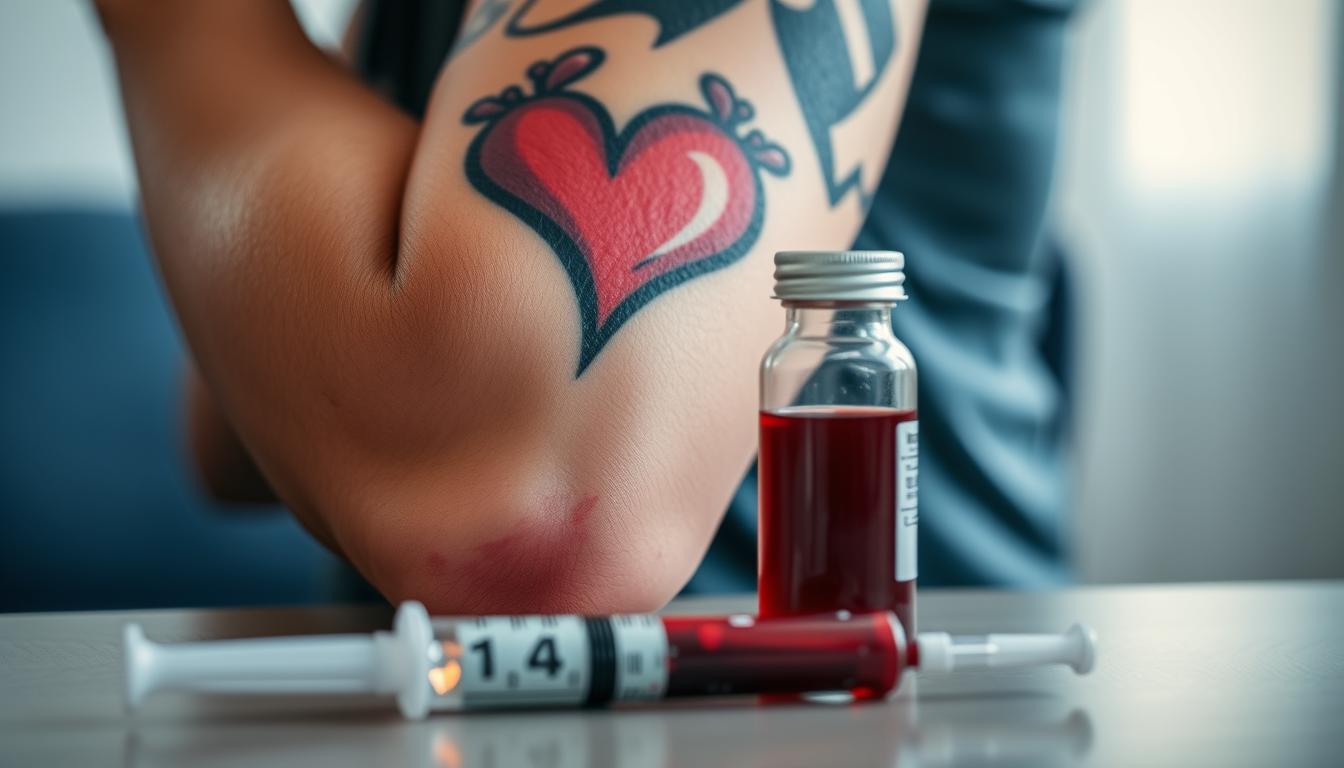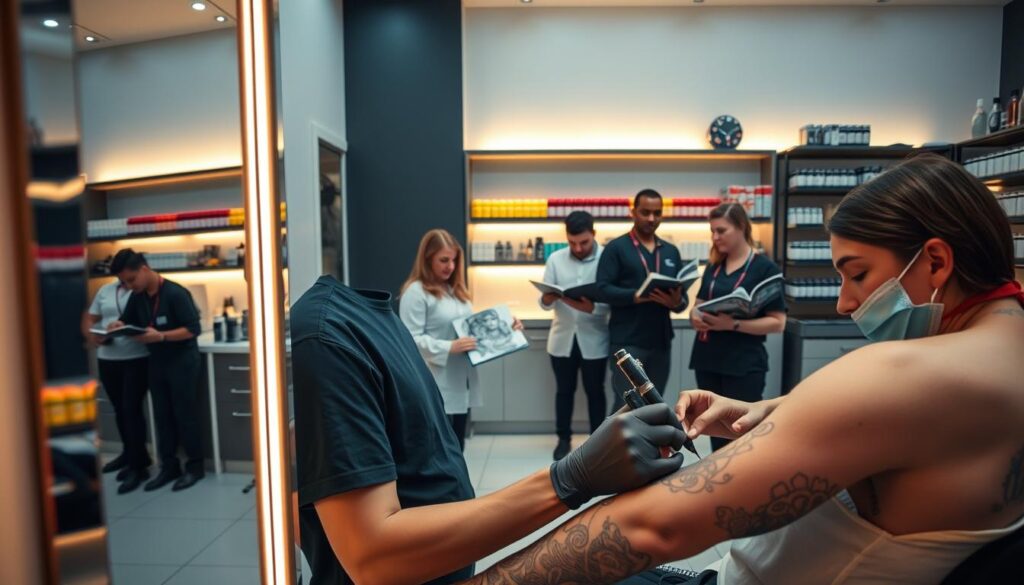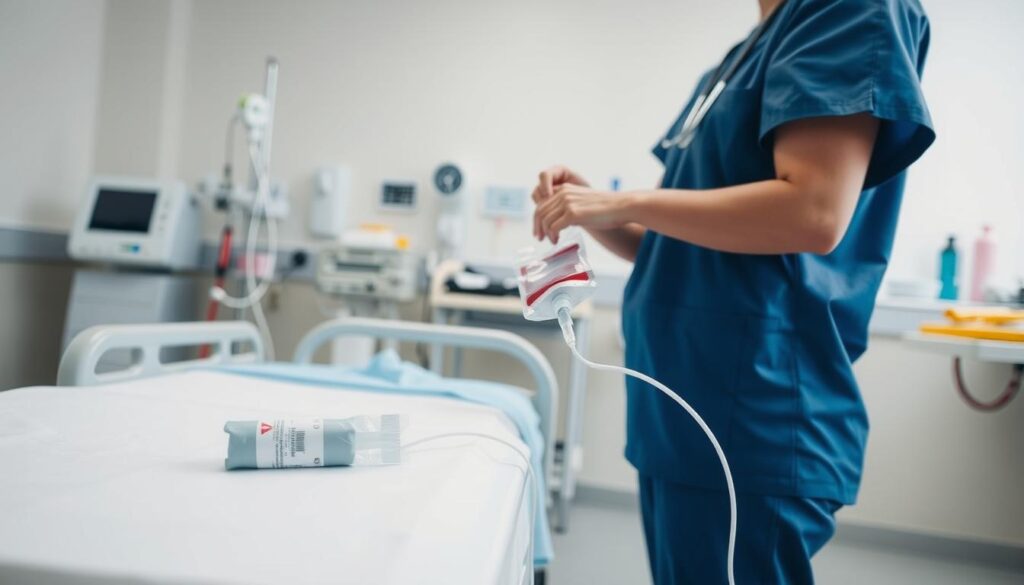
What if your passion for body art could coexist with your desire to save lives? For years, myths about tattoo enthusiasts being banned from blood donation centers have spread faster than a fresh ink stain. But here’s the twist: modern guidelines have rewritten the rules.
The FDA shortened the deferral period in 2020 from 12 months to just 3 months after getting inked. This change reflects advancements in hygiene standards and sterilization practices at licensed studios. Carolina Holler, a Brazilian with 10 tattoos, proves this shift works—she’s donated multiple times without issues.
Why the wait? Introducing foreign substances like ink triggers your immune response, creating a brief window where bloodborne pathogens could go undetected. This precaution protects both donors and recipients. Blood banks prioritize safety but also need diverse donors—after all, 1 donation can save up to 3 lives.
Key Takeaways
- FDA rules now require only a 3-month wait after tattoos or piercings
- Licensed studios reduce infection risks, making donations safer
- Real donors with extensive body art successfully give regularly
- Waiting periods address temporary immune system responses
- Balancing personal expression and public health is achievable
Understanding Blood Donation Guidelines After Getting a Tattoo

New ink doesn’t have to mean a long wait to help others. Updated federal rules balance body art enthusiasm with life-saving opportunities through smart safety measures.
Why Three Months Makes Sense
The FDA’s 2020 update cut the deferral from 12 to 3 months – a game-changer for regular donors. This window allows potential bloodborne pathogens like hepatitis or HIV to show detectable antibodies. Dr. Lila Chen from Stanford Blood Center notes: “This timeframe protects recipients while respecting donors’ contributions.”
State-Regulated Studios Get You Back Faster
Licensed shops with strict protocols might shorten your wait. These facilities must:
- Use single-use needles
- Autoclave reusable equipment
- Maintain health inspection records
| Factor | Pre-2020 | Current Rule |
|---|---|---|
| Waiting Period | 12 months | 3 months |
| Studio Requirements | Any facility | State-regulated only |
| Pathogen Testing | Less precise | Advanced antibody detection |
Over 40 states now require tattoo licensing, making verification easier. Always ask for studio certifications – reputable artists display them proudly. This system helps blood donation centers welcome more donors without compromising safety.
can you donate blood if you have tattoos

Your next tattoo could impact more than just your skin art. Eight states currently don’t mandate statewide licensing for studios: Arizona, Idaho, Maryland, Nevada, New York, Pennsylvania, Utah, and Wyoming. However, cities like Baltimore and Philadelphia enforce local regulations even in these areas.
Regulated vs. Unregulated Tattoo and Piercing Facilities
Choosing a licensed studio does more than ensure quality ink work—it protects your donating blood eligibility. Regulated shops must follow strict protocols:
- Disposable needles opened before your eyes
- Steam-sterilized tools between clients
- Public health certificates on display
| Studio Type | Wait Time | Safety Measures |
|---|---|---|
| State-Regulated | 0-3 months | Mandatory inspections |
| Unregulated | Full 3 months | Variable standards |
Myths vs. Facts About Ink and Blood Donation
Contrary to rumors, tattoo pigments don’t permanently affect your body’s suitability as a donor. The waiting period addresses potential infection risks, not ink composition. Dr. Emily Torres from the American Red Cross clarifies: “Modern pigments stay in skin cells—they don’t circulate in the bloodstream after healing.”
Planning your body art around donation schedules helps maintain both self-expression and community support. Always request studio licensing documentation—reputable artists happily provide it. This simple step keeps your life-saving contributions on track while celebrating personal style.
Health Considerations and Eligibility Criteria for Donating Blood

Understanding health requirements ensures your noble gesture meets safety standards. Let’s explore what might delay or prevent participation in life-saving programs.
When Health Conditions Become Permanent Barriers
Certain diagnoses create lasting restrictions. Chronic conditions like hepatitis B/C, HIV, and sickle cell disease permanently make donors ineligible. Rare disorders like Creutzfeldt-Jakob or Ebola virus infections also prohibit participation due to transmission risks.
Temporary Hurdles: Timing Matters
Many situations only require waiting periods:
| Condition | Waiting Period | Action Needed |
|---|---|---|
| Blood transfusion | 3 months | Monitor recovery |
| Dental surgery | 3 days | Heal completely |
| Heart surgery | 6 months | Doctor’s clearance |
| Zika virus | 120 days | Watch for symptoms |
Meeting the Basic Requirements
Donors must generally:
- Have blood pressure between 90/50 and 180/100 mm Hg
- Maintain hemoglobin levels above 12.5 g/dL
- Weigh at least 110 pounds
Recent vaccines like COVID-19 shots involve short pauses—typically 2-4 weeks. As the Red Cross notes: “Temporary deferrals protect everyone while keeping donor pools robust.” Always check current guidelines before scheduling your appointment.
Preparing for a Safe and Effective Blood Donation

Proper preparation transforms your good intentions into life-saving actions. Let’s explore how to maximize your impact while keeping your body strong throughout the process.
Fuel Your Body Right
Start hydrating 24 hours before your appointment—aim for 16 ounces of water or juice right before arriving. Boost iron levels with meals featuring spinach, lentils, or lean beef. Avoid greasy foods that might affect blood quality. Need platelets? Skip aspirin for 48 hours prior.
| Action | Timing | Benefit |
|---|---|---|
| Hydration boost | Day before | Easier vein access |
| Iron-rich meals | 3 days prior | Healthy hemoglobin |
| Avoid fatty foods | 12 hours pre-donation | Clean plasma |
Recovery Made Simple
After giving, sip 32 extra ounces of fluids within 24 hours—water beats alcohol during this period. Keep the bandage dry for 4 hours, then gently clean the area. Skip heavy lifting or intense workouts for 12-24 hours.
- Locate donation centers through American Red Cross’s app
- Track your 8-week interval between whole blood donations
- Combine appointments with recent ink plans thoughtfully
“Hydration and iron intake make the difference between an okay experience and a great one,” notes an American Red Cross nurse.
Mobile drives often appear at community centers or workplaces—check local listings weekly. With smart planning, you’ll help others while maintaining your own wellness.
Conclusion
Your love for body art and life-saving actions can coexist harmoniously. Modern medical guidelines have transformed how ink enthusiasts contribute to blood supplies. By following simple protocols, that fresh tattoo becomes just a temporary pause in your altruistic journey.
The FDA’s three-month rule balances safety with accessibility, letting you schedule donating blood around new ink plans. Choosing state-regulated studios often shortens wait times through verified safety practices. As Dr. Aseem Kumar Tiwari confirms: “Tattoos don’t define eligibility—informed choices do.”
Remember that temporary deferrals protect recipients while respecting your desire to help. Health professionals stand ready to clarify concerns about medications, travel, or recent procedures. Proper hydration and iron intake remain your best allies for successful donation experiences.
Every pint given strengthens community health networks. Whether you’re sporting sleeves or subtle designs, your capacity to save lives remains intact after the waiting period. Let your body art tell a story that includes both self-expression and service to others.
